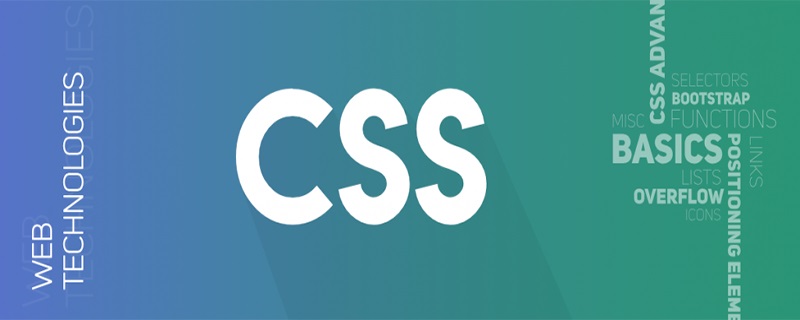

Implementation method:
1. Float floating
<section class='layout float'>
<style>
.layout.float .left-right-center{
height: 100px;
}
.layout.float .left{
float: left;
width: 300px;
background-color: red;
}
.layout.float .right{
float: right;
width: 300px;
background-color: blue;
}
.layout.float .center{
background-color: yellow;
}
</style>
<article class="left-right-center">
<div class="left"></div>
<div class="right"></div>
<div class="center">我是中间的自适应元素--浮动</div>
</article>
</section>Principle: The left and right divs are separated from the document flow due to floating, and the center will move up , resulting in the effect of a three-column layout (provided that the heights are the same)
Advantages: High compatibility
Disadvantages: Need to clear floats to prevent affecting other elements
If the height is not fixed , the content in the middle will be stretched, and the left and right sides will not be stretched together
(Recommended tutorial: CSS tutorial)
2. Absolute positioning
<section class="layout absolute">
<style>
.layout.absolute .left-center-right div{
position: absolute;
height: 100px;
}
.layout.absolute .left{
left: 0;
width: 300px;
background-color: red;
}
.layout.absolute .center{
left: 300px;
right: 300px;
background-color: yellow;
}
.layout.absolute .right{
right: 0;
width: 300px;
background-color: blue;
}
</style>
<article class="left-center-right">
<div class="left"></div>
<div class="center">
我是中间的自适应元素--绝对定位
</div>
<div class="right"></div>
</article>
</section>Principle: Use absolute positioning and width to fix the divs on the left and right sides, and the width of the middle div will have an adaptive effect
Advantages: Quick
Disadvantages: If the parent element is detached Without the document flow, the child elements will definitely break away from the document flow, and there are not many application scenarios
If the height of the middle element increases, the height of the elements on both sides will not increase, so only the middle div will be stretched
3. Flex layout
<section class="layout flex">
<style>
.layout.flex .left-center-right{
display: flex;
height: 100px;
}
.layout.flex .left{
width: 300px;
background-color: red;
}
.layout.flex .center{
flex: 1;
background-color: yellow;
}
.layout.flex .right{
width: 300px;
background-color: blue;
}
</style>
<article class="left-center-right">
<div class="left"></div>
<div class="center">
我是中间的自适应元素--flex布局
</div>
<div class="right"></div>
</article>
</section>Principle: Set the parent element to flex layout, and then set flex to 1 for the middle element to achieve an adaptive effect
Advantages: Commonly used in actual development
Disadvantages: IE8 and below browsers do not support
If the height is not fixed, after the height of the middle content is expanded, both sides will also be expanded accordingly
4. table Layout
<section class="layout table">
<style>
.layout.table .left-center-right{
display: table;
height: 100px;
width: 100%;
}
.layout.table .left{
display: table-cell;
width: 300px;
background-color: red;
}
.layout.table .center{
display: table-cell;
background-color: yellow;
}
.layout.table .right{
display: table-cell;
width: 300px;
background-color: blue;
}
</style>
<article class="left-center-right">
<div class="left"></div>
<div class="center">
我是中间的自适应元素--table
</div>
<div class="right"></div>
</article>
</section>Principle: Set the parent element to table layout, and then each child element is teble-cell. Set a fixed width to the left and right grids, and the middle grid can achieve an adaptive effect
Advantages: Good compatibility, can be used as a replacement for flex layout below IE8
Disadvantages: Limitations
If the height is not fixed, when the middle is stretched, the left and right sides will also It is stretched, similar to flex
5. Grid layout
<section class="layout grid">
<style>
.layout.grid .left-center-right{
display: grid;
width: 100%;
grid-template-rows: 100px;/*每一格都是100px高*/
grid-template-columns: 300px auto 300px;/*左右两格都是300px,中间是自适应*/
}
.layout.grid .left{
background-color: red;
}
.layout.grid .center{
background-color: yellow;
}
.layout.grid .right{
background-color: blue;
}
</style>
<article class="left-center-right">
<div class="left"></div>
<div class="center">
我是中间的自适应元素--grid布局
</div>
<div class="right"></div>
</article>
</section>Principle: Set the parent element to grid layout, and then specify the height and width of each grid, just use Just set the color for each cell separately
Advantages: The technology is relatively new and convenient
Disadvantages: The compatibility is not very good
If the height is not fixed, add text to the middle element , and it will not open
Related video tutorial recommendations: css video tutorial
The above is the detailed content of How to implement three-column layout in css. For more information, please follow other related articles on the PHP Chinese website!